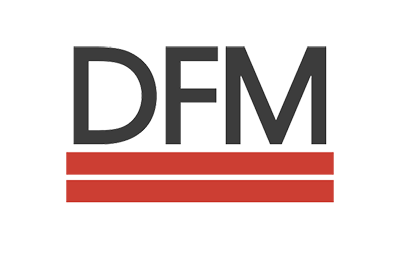An Internal Traffic Control Plan (ITCP) is a method used to coordinate workers, construction vehicles, and heavy equipment in a construction work zone. The internal traffic control plan aims to communicate the location of all parties in the work area and provide countermeasures to protect workers from work vehicles and equipment. When developed correctly, an ITCP will limit the interaction of workers and work vehicles and reduce backing and other maneuverings of large trucks in the work area.
The overall goal of an Internal Traffic Control Plan is similar to that of a Temporary Traffic Control Plan (TTCP) and can be designed in a similar manner. Both types of traffic control plans aim to coordinate the movement of people, vehicles, and machinery safely through a work zone. However, in the case of Internal Traffic Control Plans, the focus is on keeping workers and vehicles safe within the entirety of the work area.
The ITCPs and TTCPs share common principles;
- Protecting workers on foot from motorized transport and operating machines or equipment
- Clarifying the correct path by providing clear directions
- Using temporary traffic control devices to mark traffic paths
- Ensuring smooth flow of traffic
The Internal Traffic Control Plan achieves the following functions:
- Designating appropriate routes for vehicles and clarifying safe sites for workers
- Designating “no-go” zones for work equipment and vehicles
- Establishing working procedures for trucks delivering materials to the site
The internal traffic control plan contains the following components: ITCP diagrams, notes, and ITCPs legends.
Traffic Control Plan
A traffic control plan, sometimes referred to as a maintenance of traffic plan, consists of engineered drawings and written instructions. During construction projects, contractors use these instructions to control and protect traffic passing through and around work zones. A traffic control plan is essential for the safe and smooth flow of motorists, pedestrians, bicyclists, construction crews and equipment, and other motorized traffic through a work zone.
Elements of a Safe Traffic Control Plan
A safe Traffic Control Plan captures the following elements:
Signs
Signs are critical elements of any successful traffic control plan. Signage informs road users about work zone activity areas and traffic conditions. Road signs make it easier for motorists and pedestrians to make informed road-use decisions.
Traffic Control Devices
Traffic control devices are signs or markers that control traffic. Traffic control devices guide pedestrians and motorists on best road use practices. The devices are placed overhead, adjacent, next to, or across major highways, roadways, streets, and public spaces. Traffic safety cones are the most commonly used traffic control devices. You will find traffic control cones near construction projects or areas of immediate danger. Traffic safety cones are usually used to divide traffic areas during short-term maintenance work. Safety cones are also used to indicate and provide a clear and safe path to opposing traffic areas.
Work Zone Protections
A safe traffic control plan must establish work zone protections, like Clear Zones or Positive Protection Barriers. Clear work zones safeguard workers on foot and the public against occupational hazards such as concrete barrier ends, fixed objects, and steep slopes. Positive protection barriers also act as work zone protections that protect motorists, pedestrians, and workers on foot against lateral and longitudinal crashes in work zones. Positive protection are measures erected between workers and motorized traffic. These protections are designed to contain direct vehicles. Positive protections routinely include mobile barriers, movable concrete barriers, temporary steel barriers, and sometimes full road closure.
Flagging
Flagging refers to temporary road signage that protects road workers and construction assets. Flagging provides mobility without compromising on durability and usability. In addition, road construction projects that utilize flags enjoy the ease of setup, making it simple to guide motorized traffic.
Lighting
Lighting provides good visibility in continuous cold, rain, humid, and dusty conditions. Lighting enhances safe road use by providing visibility, both at night and during the day, and guides motorized traffic. Lighting ensures an orderly traffic flow and reduces collisions of vehicles entering intersections. Lighting provides an opportunity for vehicles to cross an intersection. Traffic lights can monitor car motions, help avoid collisions, and prevent congestion.
Training
Road training is a critical aspect of any safe traffic control plan. Drivers, machine operators, and road users must be educated on best road use practices. Training motorists, pedestrians, workers on foot, and other road users reduces crashes and fatalities. Training provides real-time feedback, reducing compliance and liability costs. Using applied scenarios and skills enhances trust and shared understanding of road-use best practices.
DFM Development Services – Guiding You Through the Traffic Control Plan
DFM Development Services, LLC guides contractors, civil engineers, and public agencies through the complex process of developing Traffic Control Plans. Our in-house staff holds advanced certifications in work zone safety and routinely assists civil engineers and contractors with designing and implementing safe internal traffic control plans and maintenance of traffic plans. Contact DFM Development Services, LLC today to discuss your traffic control plan needs.





2 Responses
I’m glad you mentioned how signs are crucial for any traffic control plan to be successful. I imagine that it would be essential to invest in traffic control signs from a well-reputed provider. In doing so, you can rest assured that the signs are of the highest quality and will provide a high level of visibility from the road.
It makes sense that it is critical to have signs. My husband’s construction company is planning on working on a busy road in a couple of weeks, so he wants to make sure he knows how to keep everyone safe while working. I’ll pass this information along to him so he can know how to get the right traffic control equipment for his company.